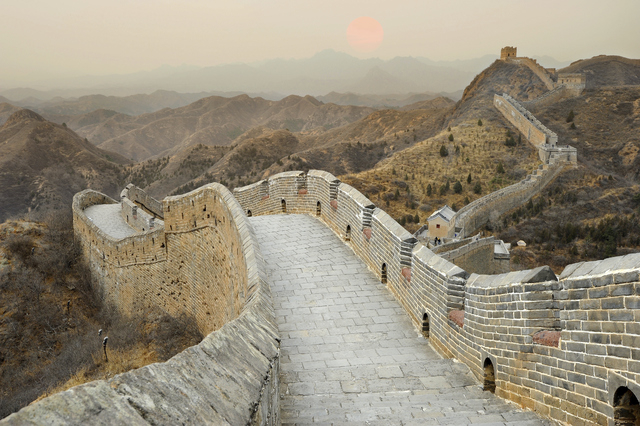30 percent of the Great Wall of China is gone

It was originally built to defend an empire, but now parts of the Great Wall of China are crumbling so badly they need someone to leap to their defense.
About 2,000 kilometers, or 30%, of the ancient fortification built in the Ming Dynasty era has disappeared due to natural erosion and human damage, according to the Beijing Times.
And the situation could worsen, experts are warning, as not enough is being done to preserve what remains.
“It’s a great pity to witness the Great Wall in such devastated situation,” Mei Jingtian, a volunteer who has worked for three decades to safeguard the structure and has founded of the Great Wall Protection Association, tells CNN.
About 8,000 kilometers of the structure dates from the Ming period between the 14th and 17th centuries and is considered by some to be the original Great Wall.
Of this, 2,000 kilometers is made up of naturally occurring earthworks — and so only 6,000 kilometers of actual Ming dynasty wall was ever built.
Stretches built in other eras make up an overall length estimated at up to 21,000 kilometers.
Many visitors to China associate the Great Wall with an extensively restored stretch of Ming era wall at Badaling near Beijing, but this is far from typical of most of the structure.
According to a 2014 survey done by the Great Wall of China Society, only about 8.2% of the Great Wall is in good condition, with 74.1% classified as poorly preserved.
“The Great Wall is a vast heritage site — over 20,000 kilometers — hence increasing the difficulty in preservation and restoration,” Dong Yaohui, deputy director of the Great Wall of China Society, tells CNN.
“Reliance on a very small amount of manpower by the local heritage departments is not enough to guard and protect the site.”
A recent surge in interest from tourists in visiting unexploited sections, known as the “Wild Great Wall,” has accelerated its deterioration, according to the report.
Graffiti and theft have also taken their toll.
“Local residents in some sections sell bricks that have historic engravings on them,” says Dong.
Dong says to effectively cover the most endangered stretches of the wall, local governments should provide subsidies and education to encourage local residents and farmers to get involved in its protection.
Increased penalties for causing damage are also needed, he adds.
“For example, several weeks ago, part of the Great Wall in Ningxia was bulldozed by local government departments for agricultural development. The people responsible received only a verbal warning but no severe punishment.”
Mei adds that local people should also be recruited to ensure tourists respect the structure.
“Such activities should be carried on for future generations,” he adds.